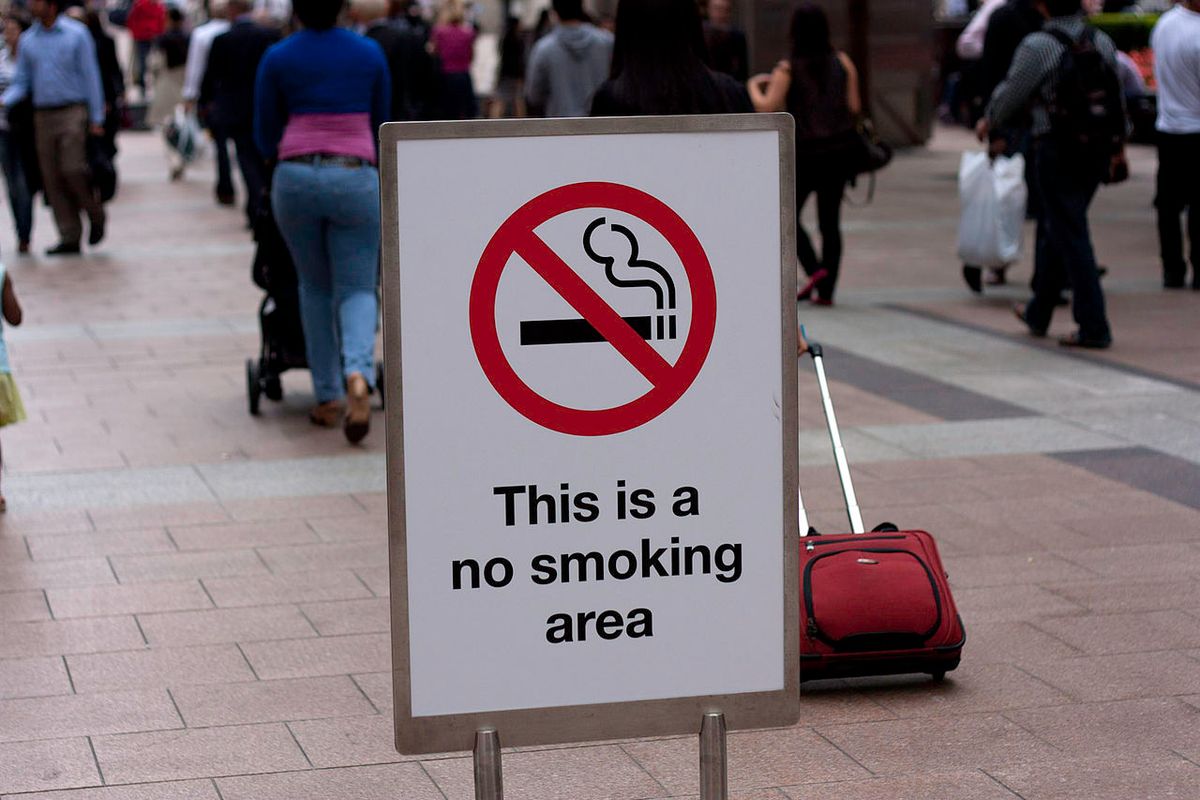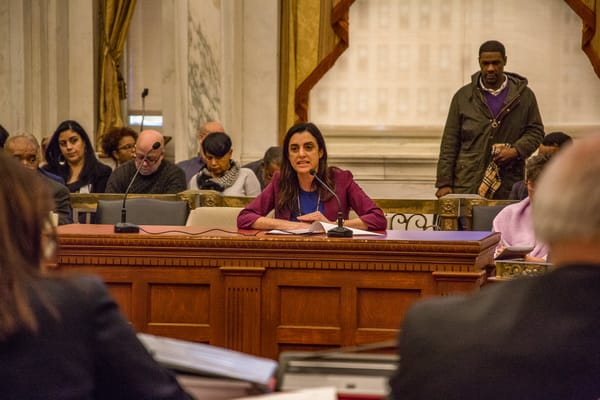Respecting the Agency of Smokers: the Liberalism of Harms Reduction and the Illiberalism of Prohibitionism

Two years ago, I published my book The Rediscovery of Tobacco, in which I made a case for taking a liberal approach to tobacco regulation with an emphasis on encouraging harm reduction. The timing coincided with a low point for the cause in the United States. A deadly outbreak of lung injuries caused by dangerous additives in mostly illicit cannabis cartridges had been falsely blamed on nicotine vaping. State and local governments responded by banning vapor products, the Food and Drug Administration ordered many flavored products off the market, and police went store-to-store enforcing emergency rules. In one state, people possessing newly illegal e-cigarettes could have been penalized with up to six months in prison.
Two years later, the opportunity to help smokers switch to safer products is threatened once again. September 9 was the deadline, imposed by court order, for the FDA to decide which e-cigarettes and vapor products will be allowed to remain for sale in the United States. The hope for advocates of harm reduction was that scientific analysis at the FDA would prevail over media and political alarmism; past and current leaders at the agency had voiced a commitment to harm reduction, acknowledging that nicotine products exist on a continuum of risk and that transitioning smokers to safer products is a desirable goal.
The agency received 6.5 million applications from companies making e-cigarettes and nicotine e-liquids. While no one expected all or even most of them to make it through the process, there was an expectation that companies making a good faith effort to demonstrate that their products can contribute to public health by displacing cigarettes would stand at least a fair chance of approval.
In the end, the agency refused to accept 4.5 million applications for review. It explicitly rejected more than a million others from 323 companies. The number of applications it approved is zero. The expectation remains that a few products—likely from the biggest companies, including those owned by Big Tobacco—will eventually be authorized. For now, however, although enforcement will lag, every e-cigarette and vapor product in the United States is sold unlawfully.
At the same time, the lethal conventional cigarettes that take the lives of more than 400,000 Americans every year remain almost entirely unchanged after more than a decade of FDA regulation and they are legally available in any convenience store. Many people who currently vape and are losing access to the products they prefer will likely end up switching to cigarettes.
This is a policy disaster. All of the rules and processes of supposedly rational technocratic administration were followed, and yet the result is this obviously absurd outcome. One has to wonder, how did we get here?
Professional advocates of tobacco harm reduction offer some answers. They point to the influence of ideologically rigid groups like the Campaign for Tobacco-Free Kids, lavishly funded by Michael Bloomberg to pursue an abstinence-only, prohibitionist agenda. They note that the Tobacco Control Act was intentionally written to place greater scrutiny on new products than on cigarettes, protecting the interests of tobacco companies. They lament lazily alarmist journalism on vaping, from small local outlets to prestigious newspapers like the New York Times. They blame grandstanding politicians for interfering with the FDA’s process of review.
All of these answers are valid! There is plenty of blame to go around. But these answers are also short-sighted, viewing the immediate present in isolation from other debates about smoking in the recent past. This is a mistake that obscures the ways in which the anti-smoking movement itself created a cultural environment in which it is unable to effectively advocate on behalf of smokers. These advocates continuously fail to persuade in part because, despite their good intentions, they belong to a movement that has spent decades delegitimizing the rights and agency of people who smoke or consume nicotine.
Creating a culture of illegitimacy
It’s illuminating to compare the path of nicotine over the past century with that of other drugs, particularly alcohol and cannabis. Historian Virginia Berridge traces this at length in her book Demons, which examines how drug regulations and culture interact. “[Substances] with widespread cultural legitimacy are not easily made the subject of stringent systems of control,” she argues. “But increased regulation in turn impacts on culture and helps to change it; and that cultural change in turn opens the door for further regulation. It is an iterative process.”
Although she published this in 2013, it’s an apt explanation for why the crackdown on vaping has met with so little cultural resistance. There is a basic lack of consideration for the smokers and vapers most affected by the FDA’s bans that makes them so much easier to enact. Coverage of the topic presents it as a business story or a political drama, with focus on the future of Juul or the use of e-cigarettes among youth (the latter of which has declined substantially). But of the 8-10 million American adults who vape and may be driven to smoking, or the 34 million Americans who smoke and are being denied access to safer alternatives, there is hardly a word.
Compare this to alcohol. There was seemingly more contentious public debate over bans on Four Loko ten years ago than there is now about bans on e-cigarettes that can save smokers’ lives. And Four Loko was the memorable exception; Americans are generally pleased to allow the sale of just about any form of alcohol, even though its social costs are far greater than those of vaping—underage binge drinking leads to more than 3,500 deaths each year. Yet there is no corresponding movement to ban flavored alcoholic drinks like Fireball or White Claw, and if there were it would be met with vociferous opposition.
Similarly, in states that have legalized cannabis, flavored vapes, candies, drinks, and gummies are perfectly acceptable. For alcohol and increasingly marijuana, America’s libertarian tendency to view adults as entitled to consume what they prefer consistently wins out over concerns about those products’ appeal to youth. In contrast, the idea of an adult nicotine consumer whose rights are entitled to respect has been erased from the conversation.
This isn’t an accident; it’s the direct result of how activists and academics have sought to delegitimize smokers from the very beginning of the anti-smoking movement. When the relevant fronts in the war on smoking were fighting tobacco companies and pushing for smoking bans, their strategy was to stigmatize smokers by portraying them as either passive addicts victimized by Big Tobacco or as unwelcome aggressors fouling non-smokers’ clean air. The spread of ever more expansive smoking bans, starting reasonably in airplanes but extending eventually to parks, beaches, private homes, and entire towns, could never have been justified if one took the rights of smokers seriously. So, professionals in tobacco control decided not to do so.
A sampling of discourse in the field: “We should not underestimate the public awareness value of having smokers found guilty of negligent actions in all situations indoors and outdoors,” is how one Australian activist put it. Stanton Glantz, now one of the most-cited opponents of vaping, praised smoking bans in 1987 for “implicitly defining smoking as an antisocial act.” More recently, with the dubious alarm over thirdhand smoke, smokers themselves have been described as “contaminated” and emitting toxins, rendering them an intrusive presence even when not actively smoking.
Now that the fights over smoking bans have been won and given way to debates over harm reduction, I find that advocates of the latter don’t much like to talk about the former. They’d rather focus on the present and the deep divide in tobacco control between those who support harm reduction and those who pursue a more prohibitionist approach. But this divide didn’t arise by chance; it’s the inheritance of decades in which the field tolerated the publication of bad science, punishment of dissent, and stigmatization of the very people it supposedly sought to help, so long as doing so advanced its political aims. Unfortunately, those strategies were wildly successful. Thus today, when smokers and vapers desperately need someone to defend their liberties, their allies are unequipped to offer effective support.
Liberal and illiberal harm reduction
The standard framing of contemporary debates within tobacco control portrays a divide between advocates of pragmatic harm reduction and abstinence-only hardliners who want to wipe out nicotine use completely. In The Rediscovery of Tobacco, I argued that this obscures a more fundamental disagreement within the pro-harm reduction camp:
The newly salient division is between those who embrace a liberal approach to regulation and those who advocate aggressively technocratic central planning. The liberals want to see the market for cigarettes eroded by voluntary means, with smokers choosing for themselves to quit or take up lower-risk alternatives like e-cigarettes or snus; liberals support empowering consumers by expanding the range of choices and providing accurate information about the risks of each. The technocrats seek not to nudge, but to shove, controlling the market from the top-down by banning some products entirely and coercively rendering others less appealing. If the technocrats prevail, the freedom to smoke or use nicotine in any form may be extinguished.
E-cigarettes themselves are the product of bottom-up innovation, evolving via exchanges on internet forums and in independent vape shops; when they arrived in the United States a decade ago, the technocratic response of the FDA was to ban them before they ever had a chance to prove their potential for harm reduction. (Fortunately, a federal judge intervened.) Pro-vaping activists, such as consumers and shop owners, tend to emphasize the freedom to experiment and the right to make their own decisions. The more prominent academic advocates of harm reduction, in contrast, tend to remain wedded to a technocratic approach.
As an illustration, consider one recent landmark article in defense of vaping. It’s a joint publication in the American Journal of Public Health written by Kenneth Warner of the University of Michigan and fourteen additional past presidents of the Society for Research on Nicotine and Tobacco. “We believe the potential lifesaving benefits of e-cigarettes for adult smokers deserve attention equal to the risks to youths,” they write, warning that the “singular focus of US policies on decreasing youth vaping may well have reduced vaping’s potential contribution to reducing adult smoking.” They also note that social justice demands greater consideration for adult smokers:
African Americans suffer disproportionately from smoking-related deaths, a disparity that, a new clinical trial shows, vaping could reduce. Today’s smokers come disproportionately from lower education and income groups, the LGBTQ (lesbian, gay, bisexual, transgender, and queer or questioning) community, and populations suffering from mental health conditions and from other drug addictions. Smoking accounts for a significant proportion of the large life expectancy difference between affluent and poorer Americans. For smokers with serious psychological distress, two thirds of their 15-year loss of life expectancy compared with nonsmokers without serious psychological distress may be attributable to their smoking. Vaping might assist more of these smokers to quit.
“To the more privileged members of society,” they conclude, “today’s smokers may be nearly invisible.” Yet the authors do not investigate the question of who rendered these smokers invisible, nor do they couch their defense of vaping in terms of the rights of these groups to take active roles for themselves in deciding which forms of nicotine or tobacco they should be allowed to consume. Indeed, the authors endorse additional coercive measures, such as mandating the removal of nicotine from conventional cigarettes. Many of them have also endorsed banning menthol cigarettes, which would paternalistically restrict the choices of minority smokers and potentially subject sellers to policing and incarceration.
Warner and the other signatories to the AJPH paper are valued allies making the case for tobacco harm reduction, and their recent publication has been justly celebrated within that small community of advocates. But it also must be said that their arguments have not penetrated far into the broader public discourse, where they are swamped by the demonization of vaping and calls for prohibition. Perhaps that’s because in place of a compelling alternative to prohibitionist approaches, they offer only prohibition lite. It’s difficult to advocate for smokers and vapers when the advocates themselves don’t view their autonomy as worthy of respect.
Technocratic advocates of tobacco harm reduction are often just as enthusiastic about top-down control of other people’s choices as their Bloomberg-backed rivals. As an occasional cigar smoker, for example, I’m acutely aware that many of the experts with whom I stand on common ground with regard to vaping would infringe my freedom to smoke cigars without a second thought, and woe to anyone who’d prefer to keep smoking cigarettes.
Warner has suggested that removing nicotine from combusted tobacco would actually free smokers to enjoy tobacco more authentically by separating the drug from the method of delivery, a facile argument that I assume he’s never tried floating at a cigar lounge or bar patio. Imagine trying to persuade beer or coffee drinkers that there would be no loss in stripping the drinks they enjoy of alcohol or caffeine and you see the problem. But it’s not an argument intended to convince smokers, who aren’t meant to have a say in the matter.
The unquestioned assumption across all factions in the field of tobacco control is that the aim of eradicating smoking is universally shared. As Warner wrote in an issue of the academic journal Tobacco Control devoted to exploring possible endgames against smoking, “While we struggle today with often widely divergent perspectives and beliefs, we all share the same vision of the final words to this story: ‘The end.’” Who is the “we” here? Not smokers, surely! Among the journal’s twenty essays, there are none defending the right to smoke, and likely none written by a current smoker. Within the field, smokers are dismissed as people to be acted upon, not listened to.
Once again, it’s worth comparing the path of nicotine to other drugs, for which liberalization and harm reduction are gaining traction. Identifying gradual changes in culture beginning in the 1980s, Berridge writes in Demons:
Concept shift took place with new ideas about “use” and “problem use” applied to illicit drugs, while, conversely, drug-focused ideas of “addiction” began to be applied to tobacco. Tobacco was changing places to become more like a drug, while drug use itself was becoming “normalized” and part of a wide spectrum of use in society. From the 1980s onward, new ideas about drug use tended to see it as more “normal” while tobacco smoking became seen as pathological.
This shift was due in part to the work of social movements. Progress in harm reduction for drugs was achieved by activists reconceptualizing addicts as self-confident users. “[The] concept of ‘the user’ was significant,” Berridge writes, “for it replaced the idea of the passive ‘addict’ and recipient of services with a much more active concept.” Smokers, in contrast, came to be viewed more like the helpless opium addicts of previous centuries: “The mantle of the nineteenth-century temperance and anti-opium organizations was inherited instead by the anti-tobacco international networks.”
To the extent that there is pushback against this conception of smokers as passive addicts unable to make free decisions in their own interests, it comes from the community of vapers rather than from experts in tobacco control. Consider how Sarah Jakes, an ex-smoker and now vaping advocate in the United Kingdom, reframes the issue with a focus on the individual pursuit of pleasure:
The word “pleasure” seems to be something of an anathema to some in public health. One of the biggest challenges for consumers is in getting regulators, and those who advise them, to understand that for a great many people vaping is not a medicine, or simply a smoking cessation intervention, it works precisely because it isn’t those things. It works because they enjoy it. They love the personalization that’s made possible by the diversity of the market in devices, and the thousands of flavours available. They enjoy the identity of being a vaper and the sense of community that that entails. They love that vaping is similar to smoking, but at the same time a million miles away from it.
This is a positive, active conception of nicotine users making voluntary decisions to improve their lives with something they enjoy. It’s potentially inspiring; it’s also almost completely absent from debates over vaping in the US. This is due in no small part to the fact that our own leading advocates of harm reduction find talk of pleasurably using nicotine deeply uncomfortable. They hold a medicalized view in which nicotine only services addiction, users must be manipulated and restricted for their own good, and vaping is at best a lesser evil.
The rights of smokers and vapers to access safer products could have been better defended in the US if the anti-smoking movement hadn’t long committed to promoting illiberal attitudes toward tobacco and nicotine. A liberal approach would offer many tools to discourage smoking, but it would also recognize some constraints on how far government can go in limiting choices, leaving the decision of what to consume ultimately up to consenting adults. Such an approach might never eradicate smoking completely, but respect for users’ autonomy would serve as a principled argument against the prohibition of lower-risk alternatives that is taking place with so little cultural resistance today.
In an earlier post on this site about related policies, Adam Gurri made a case for the advantages of humane liberalism over technocratic planning:
[Beware] the temptations of the technocratic mindset. It is often pursued with the best of intentions but too often devolves into the “sleight of hand that focuses attention on technical solutions” while missing the “violations of the rights of real people” and other moral tragedies, as William Easterly put it succinctly.
The aspiration of the technocratic approach to smoking was that wise administrators guided by science would carefully control the flow of nicotine and tobacco products on and off the market, smartly transitioning smokers to abstinence or safer forms of use. In practice, the result is that the interests of smokers and vapers have been all but disregarded, millions of safer products banned, vape shops forced out of business, and the use of cigarettes perpetuated.
The FDA’s clumsy assault on tobacco harm reduction is a failure of the technocratic mindset, but also of the anti-smoking movement’s refusal to treat smokers and nicotine users as political equals whose rights must be respected. Having spent decades treating them like children, it is no surprise that it lacks now the capacity to defend them as adults.
Featured Image by Senseiich




